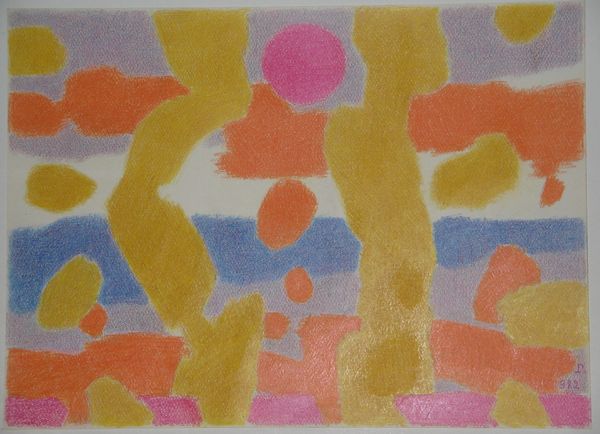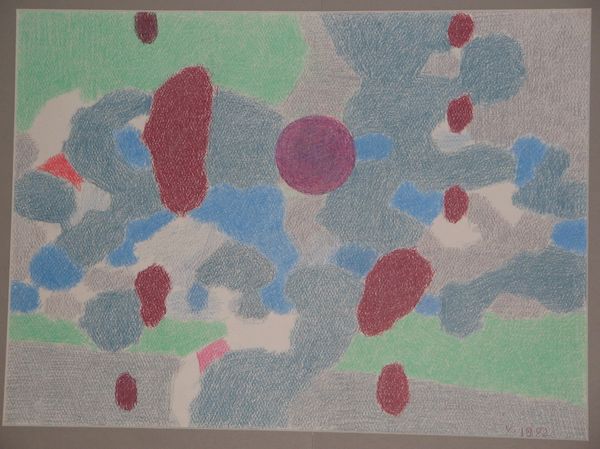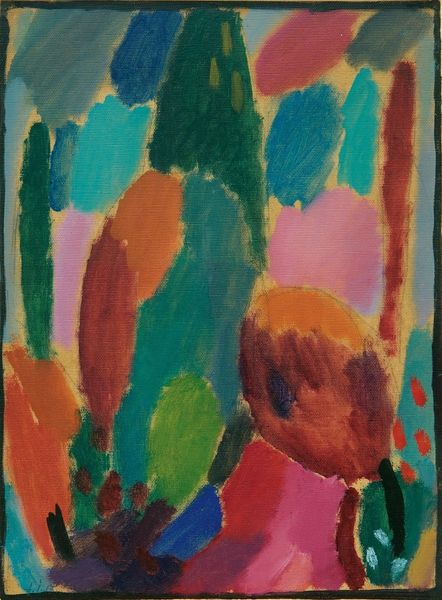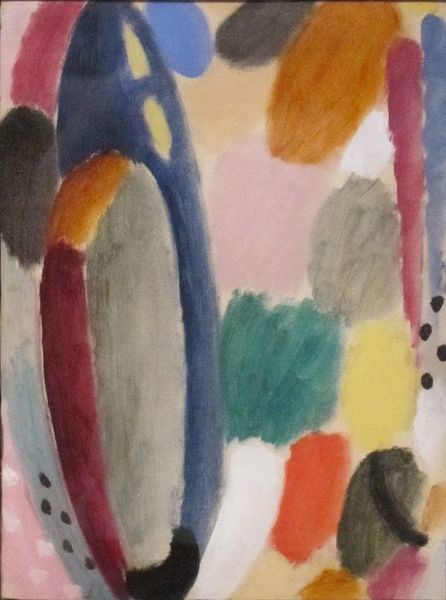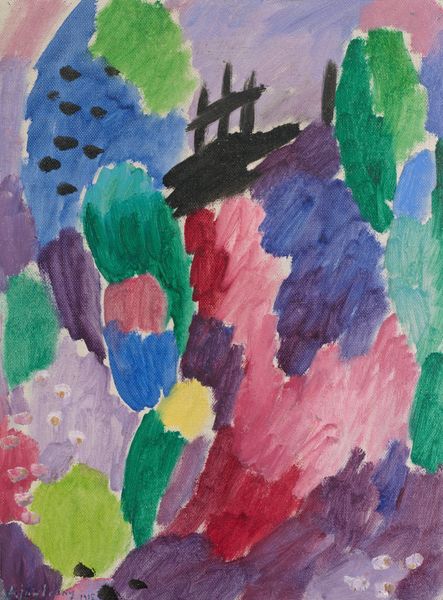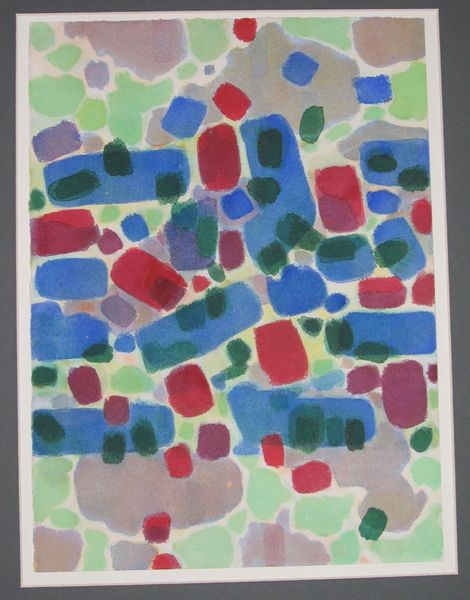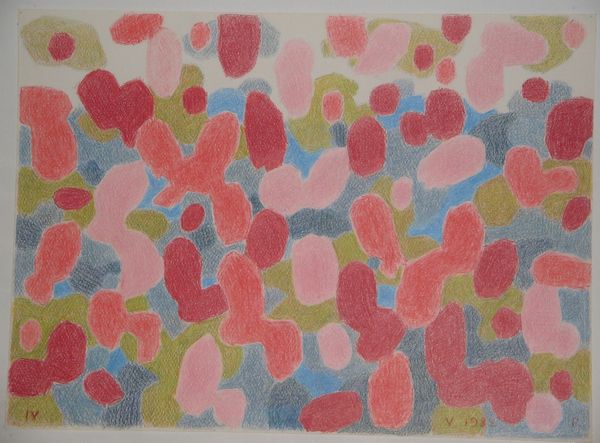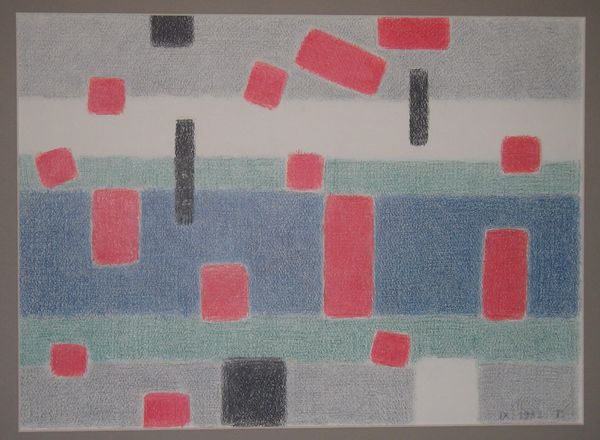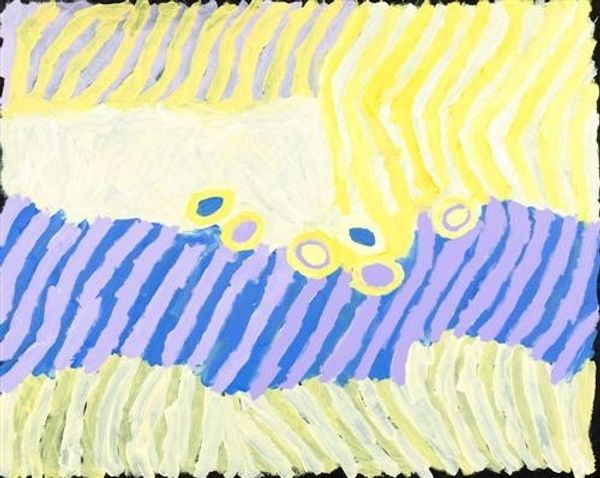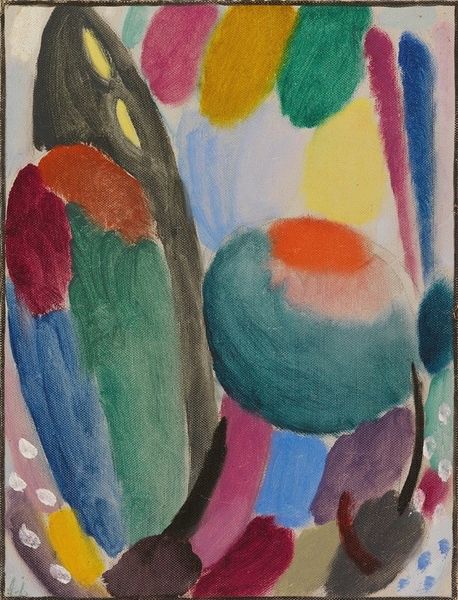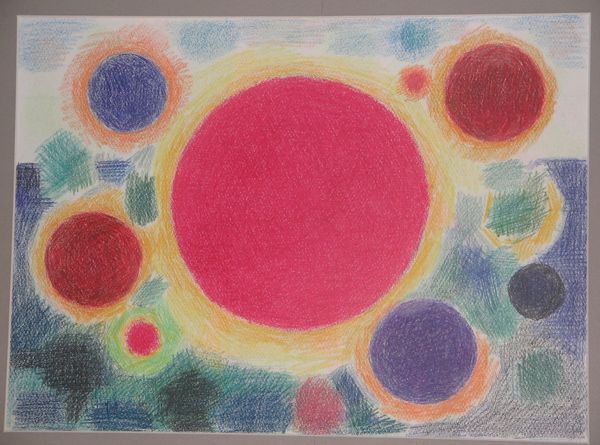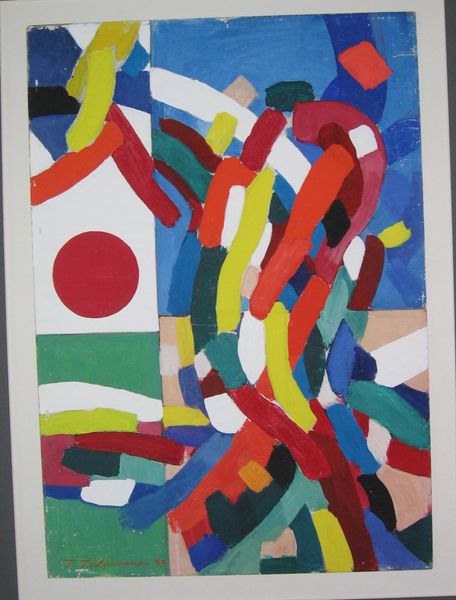
drawing, ink, pencil
#
drawing
#
organic
#
pattern
#
abstract
#
ink
#
abstract pattern
#
pink
#
organic pattern
#
geometric
#
pencil
#
geometric-abstraction
#
modernism
Copyright: Hryhorii Havrylenko,Fair Use
Curator: Hryhorii Havrylenko created this drawing, titled "Composition," in 1982. It currently resides in a private collection. The piece is primarily made with ink and pencil. Editor: Immediately, I'm struck by the interplay between order and chaos. The drawing seems like a deliberate study of geometric abstraction but also reveals a certain playful irregularity in the rendering of those geometric forms. Curator: That push and pull resonates, given that Havrylenko navigated the sociopolitical constraints of the Soviet system. His move into abstraction can be read as a subtle resistance. Note that "Composition," aligns with modernistic trends, though filtered through a Soviet lens. The question becomes how social realism pushed artists to adopt such strategies. Editor: Let's look closer at the materials: The presence of ink and pencil makes me consider the accessibility of these materials within that political climate. Were these media readily available? How did material limitations impact the scale or detail in Havrylenko's process? I'd guess that these choices reflect both artistic expression and material realities. Curator: Those questions about accessibility open up pathways to thinking about material scarcity and the cultural capital embedded in access to certain media at that time. Abstraction provided a realm for exploring personal and political themes that bypassed the direct state control of art under Socialist Realism. The subversion lies in the artist's withdrawal from explicit representation. Editor: Exactly. The pattern itself evokes textiles. What can this link to applied arts and the "everyday" reveal about divisions of labor, value, and accessibility of the means of making art within the artist’s environment? This blurring is exciting to observe here! Curator: In "Composition," Havrylenko invites us to rethink the dialogues that Eastern European artists engaged with global artistic movements, under particular ideological circumstances. Editor: A rich piece; through material constraints and artistic decisions, Havrylenko's "Composition" opens so many productive avenues of discussion.
Comments
No comments
Be the first to comment and join the conversation on the ultimate creative platform.
